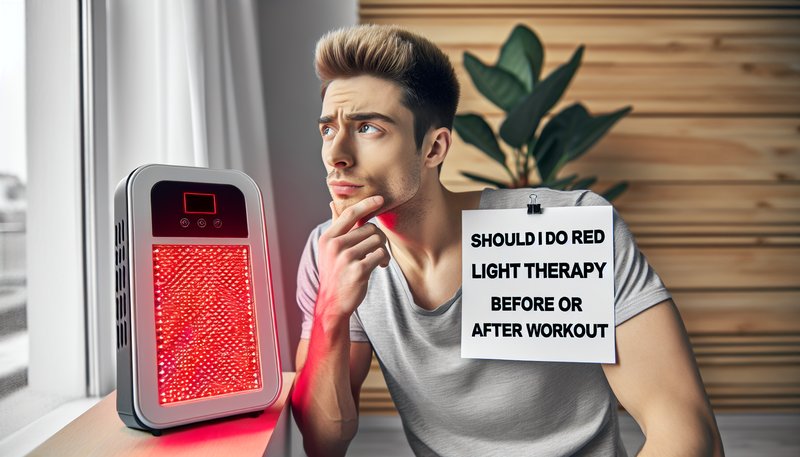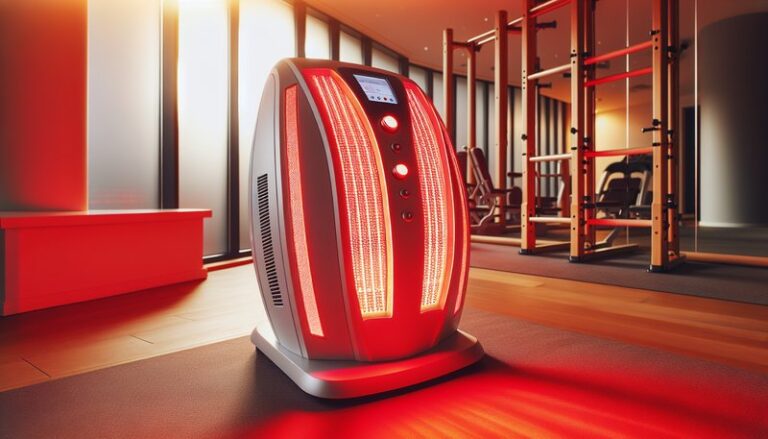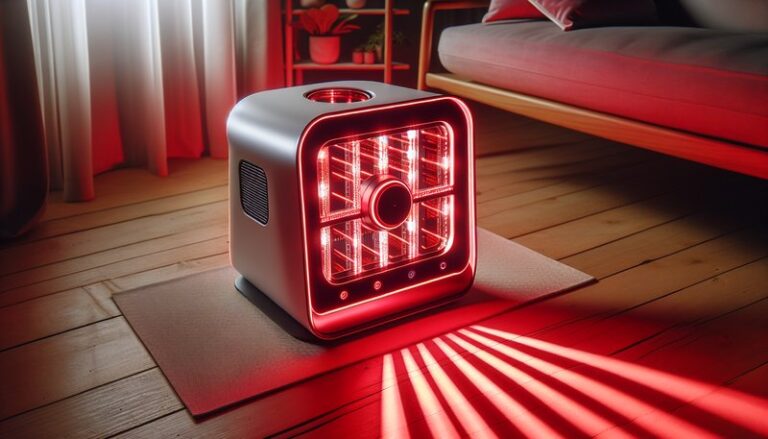Should I Do Red Light Therapy Before Or After Workout?
Should I Do Red Light Therapy Before Or After Workout?
Is red light therapy (RLT) a valuable addition to your workout regimen, and if so, when should you incorporate it?
In recent years, red light therapy has gained popularity as a wellness treatment, with many incorporating it into their fitness routines. This article will explore the timing of RLT in relation to workouts, discussing benefits, considerations, and alternatives to help you make an informed decision.
Key Takeaways
- Red light therapy can enhance muscle recovery and reduce soreness.
- Timing your RLT treatment—before or after workouts—can influence its effectiveness.
- Consider personal goals and individual responses when deciding when to use RLT.
What is Red Light Therapy?
Red light therapy involves using specific wavelengths of light, typically in the range of 600 to 650 nanometers, to potentially promote healing and rejuvenation. It is believed to stimulate cellular function by penetrating the skin, possibly leading to increased ATP production, which provides energy to cells.
Mechanism of Action
Red light is thought to stimulate mitochondria, the powerhouses of the cell, resulting in increased energy production. This enhances cellular regeneration and aids in the healing of tissues. Many sports enthusiasts and fitness individuals seek this therapy to boost performance and accelerate recovery.
Applications of Red Light Therapy
RLT is utilized for various purposes, including pain relief, improved skin health, and enhanced muscle recovery. Its versatility makes it an attractive option for those looking to improve their overall wellness.
What are the Benefits of Red Light Therapy?
Red light therapy can offer several advantages, especially for those regularly engaging in physical activities, as outlined below.
Enhancement of Muscle Recovery
RLT has been shown to reduce inflammation and accelerate muscle repair following intense exercise. Studies suggest that athletes who utilize RLT experience less soreness and improved recovery times, allowing them to train more effectively.
Increased Performance
Some users report improved endurance and strength, attributed to the increased energy available to their cells. This effect could lead to better performance during workouts, making RLT a potential game changer in pre-workout routines.
Reduction of Joint Pain and Inflammation
RLT can assist in alleviating pain and inflammation, making it beneficial for individuals recovering from injuries or those with chronic pain conditions. This can enhance overall workout capacity, allowing for a more productive exercise session.
Discover the facts in Can Red Light Therapy Help Nerve Pain?
Boosting Mood and Motivation
Exposure to red light has been associated with improved mood and reduced symptoms of anxiety, which can be beneficial for maintaining motivation to exercise regularly.
Is it Possible to Do Red Light Therapy Before or After Workout?
Yes, you can incorporate red light therapy both before and after workouts. The timing of the therapy can alter its benefits, and it’s essential to decide which aligns with your fitness goals.
What are the Advantages of Doing RLT Before a Workout?
- Increased Energy Levels: Using RLT pre-exercise may enhance ATP production, leading to improved energy levels during workouts.
- Warm-Up for Muscles: It can serve as an effective warm-up, promoting blood flow and potentially reducing the risk of injury.
- Enhanced Focus: The psychological benefits of RLT might help increase motivation and focus before engaging in physical activities.
What are the Disadvantages of Doing RLT Before a Workout?
- Time Consuming: Adding RLT to your pre-workout routine may extend the time spent before starting your exercise.
- Individual Variability: Results can vary; some individuals might not experience noticeable benefits before a workout.
What are the Advantages of Doing RLT After a Workout?
- Efficient Recovery: Post-workout RLT helps to accelerate healing and reduces delayed-onset muscle soreness.
- Inflammation Reduction: RLT can combat inflammation that often arises after intense physical activity.
- Relaxation and Recovery: Following a workout, it promotes relaxation, aiding in muscle recovery and mental wellbeing.
What are the Disadvantages of Doing RLT After a Workout?
- Delayed Activation: If your goal is to boost performance, using RLT post-workout may not deliver those benefits until after the session.
- Potential Distraction: Some individuals may find it challenging to shift directly from exercise to therapy.
What are the Things to Consider Before Choosing When to Do RLT?
Before deciding when to do red light therapy, consider several essential factors to tailor the approach to your needs.
Personal Fitness Goals
Clearly define what you want to achieve with your workouts. Is recovery your priority, or are you looking to enhance performance?
Current Physical Condition
Assess your physical status before workouts. If you’re recovering from an injury, using RLT post-workout might be more beneficial to support healing.
Time Management
Evaluate how much time you can devote to the therapy sessions. Pre-workout might require more time than you have available, while post-workout sessions may fit better into your routine.
Individual Responses to Therapy
Monitor how your body responds to RLT. Some individuals may find better results with one timing over the other, requiring you to experiment to see what works best.
What are the Alternatives to Red Light Therapy?
If you’re considering alternatives to red light therapy, several options are available to enhance your workout regimen.
Cold Therapy
Cryotherapy or ice baths can help reduce inflammation and accelerate recovery, offering a different approach to muscle healing.
Compression Therapy
Using compression garments or devices can enhance blood circulation and reduce muscle soreness post-exercise.
See our thorough exploration of Will Any Red Light Work for Therapy?
Massage and Manual Therapy
Regular massage can improve muscle recovery, alleviate soreness, and enhance flexibility, providing an alternative to RLT.
Heat Therapy
Applying heat before workouts can warm up the muscles and joints, while post-exercise heat can promote relaxation and recovery.
Conclusion: Is it Recommended to Do Red Light Therapy?
In summary, whether to perform red light therapy before or after a workout depends on your fitness goals, current condition, and personal preferences. Each timing offers distinct advantages, and experimenting with both can help you discover what works best for your body. RLT presents a valuable option for enhancing recovery, performance, and overall wellbeing, making it a worthy consideration in any fitness routine.
Frequently Asked Questions
Can anyone use red light therapy?
Most people can safely use RLT, but those with certain medical conditions or skin sensitivities should consult a healthcare professional before starting.
How long should a red light therapy session last?
Sessions typically last between 10 to 30 minutes, depending on the device and specific body areas being targeted.
Is red light therapy safe?
RLT is generally considered safe with minimal side effects. However, it’s crucial to follow device instructions and avoid overexposure.
How often should I use red light therapy?
Frequency can vary based on individual goals; users commonly benefit from 3 to 5 sessions per week for optimal results.
Will red light therapy replace traditional therapies?
While RLT offers unique benefits, it should complement, not replace, conventional medical treatments and therapies as needed.






